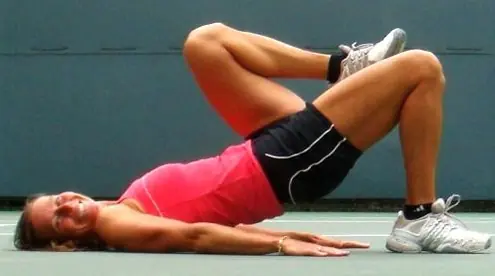This will cause an anterior pelvic tilt, which impedes the powerful glute muscles and causes tension in your hamstrings. This tightening of the hip flexors inhibits the glute muscles, called?"reciprocal inhibition."
The constant pressure and minimal use of your glutes will cause atrophy. Surrounding muscles will often attempt to compensate during the movements where glutes are called upon but cannot perform.
More: Exercises to Prevent Tennis Shoulder
Muscular imbalances and excessive stress on the joints will happen. During athletic performance, the lower back gets a lot of stress and beating because it also compensates for the lacking glutes, overuse injuries are more likely to happen, and performance will decrease tremendously.
This glute inhibition may just "sneak up" on you. One day you start experiencing lower back pains and other injuries and you don't know why.
Don't wait until that day comes. Start taking a good care of your glutes today and you will keep them strong and powerful forever.
More: Injury Prevention Tips for Tennis
Test Your Glutes
One simple test is to lie down on your stomach, bend your left leg in your knee, and then squeeze your left glute and raise your left knee off the ground. Hold the position for 60 seconds without tilting your hips or pushing with your arms to the ground. Switch sides. Was one side harder to do? Or was it almost impossible? If so, the glutes on that side are getting inhibited.
Reconnect Your Glutes
Perform the above exercise contracting the glute for 10 seconds, relax briefly, and contract again. Repeat 10 times, then switch to the other side. Always start with the weaker side, then do the better side and return one more time to the weaker side.
One-Legged Bridge
Lie down on your back; bring both heels as close to your glutes as possible, arms on the side of your body. Lift the left leg, straighten it and keep it above the ground. Push the hips up toward the sky by pushing with the right heel to the ground and contracting your right hamstrings and glutes.
More: 5 Steps to an Injury-Free Game
Hold the top position for 1 second and slowly return to the start position. Repeat 12-20 times for one side, then switch to the other side. If this is too difficult at first, you can do the bridge with both legs on the ground. As you get stronger, advance to?one-legged bridge.




